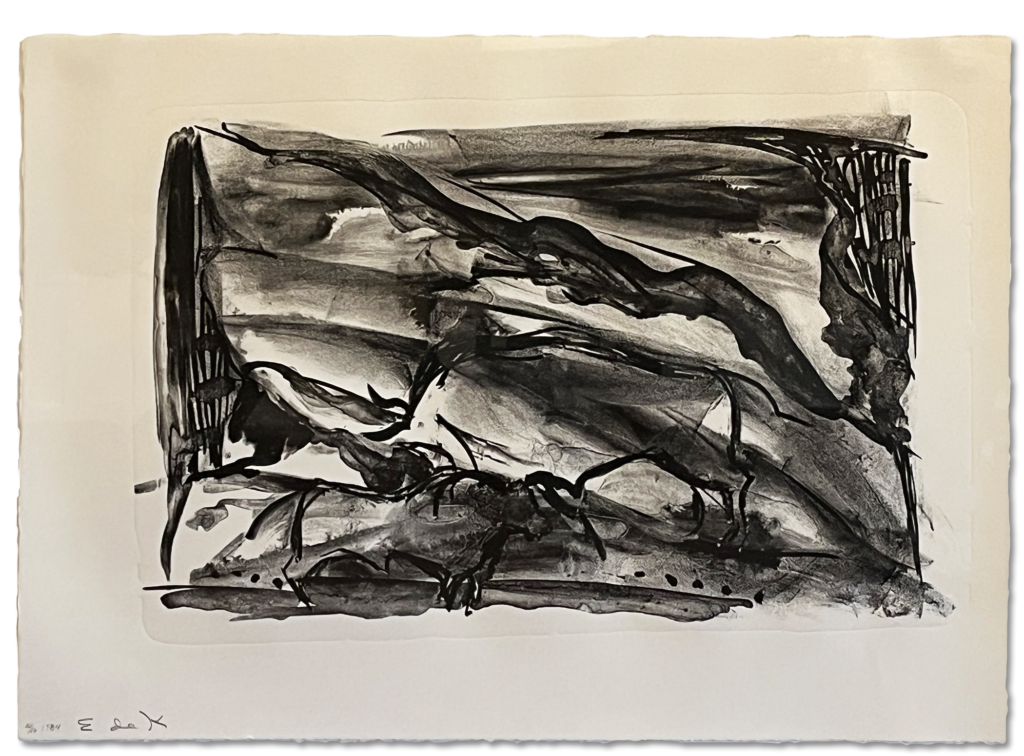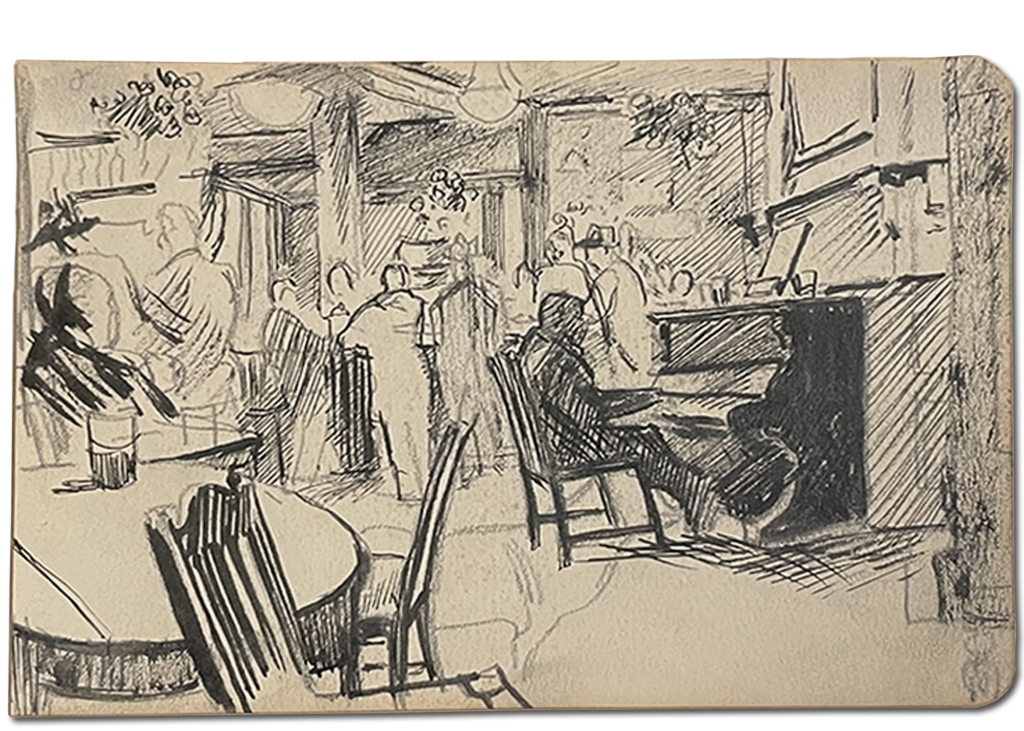When I look back on it and thinking about Wake Forest, I didn’t know it at the time, but I was dating a guy who was a year ahead of me. He knew a lot about art and was interested in it. We used to go to the student center, and I remember him showing me a Leonard Baskin piece that they had there and I never really, um, it didn’t click. I didn’t grow up with art. I didn’t study any art history. So years, years later I was living in Connecticut, and I went into a little art gallery, it was more like antique, one of these sort of flea market kind of vendors where they have stuff everywhere, and leaning against the wall buried in things… I’d always kind of liked art, but interested on the periphery of it, but there was this little Leonard Baskin. It just triggered this memory of the Leonard Baskin at Wake Forest. It was like $140 or something, and I thought, “I could own that.” It was very exciting!
So I bought it. So that was one of the first thing, I had bought local artists and things, so that was the first thing that was a named artist. So, I do credit it back to Wake Forest. I wasn’t collecting for investments, I wasn’t thinking at all about that. I was just buying pieces that I loved. I loved color, and I loved black and white pieces. I just thought things I liked and that got me and then I got addicted after that and couldn’t stop. That was really the beginning. There wasn’t a strategy, it was just moved along in a very happy way.
Terry Scarborough (‘74) Gifts Art to Wake Forest
This group was kind of inspired by the Black Mountain artist exhibits. Reynolda House had one, and I knew they were having that, and so Anni Albers has a connection there, and that made me think about sending Anni Albers. So then I thought, well while I’m doing this, getting him appraised, I should send more. So I had to think about what I wanted to send and what I was willing to give up, but also what you don’t have in your collection. You know, what would enhance the Wake Forest collection?

The first one of the pieces that I just gave was the Elaine de Kooning. I got that mainly, this is a very silly reason, but because of the name and her husband, Willem de Kooning, which I loved his work, but couldn’t afford it, and it was black and white, and I had several pieces that were black and white. Actually, I hung them in my dining room where I had a black table and sort of a black and white theme going on. But I loved the piece. I loved the energy of it. I knew about her, and it was, you know, kind of fun. It was kind of fun to have an Elaine de Kooning piece.

The fourth piece in the group that I bought was the Franz Kline, and I was aware of his artwork in the bold, geometric black and white sort of abstract design pieces, but I’d never seen anything like this.
I’ve always been drawn to sketchbooks. When you go to an art museum and they have whatever kind of shows, they often have a glass case that have the sketchbooks from the artists. I’m so interested in how people begin their career, the difference between that sketchbook and the details of him sketching in a bar with a piano player and everything going on, and how he progressed into having this very abstract splashes of black and white.
It’s impressive to me so many of these people, of these artists started that way. They started in graphic design, taking art courses, and learning to draw, and they have that skill, but they move from that into more abstract design. So I think that’s pretty cool.
